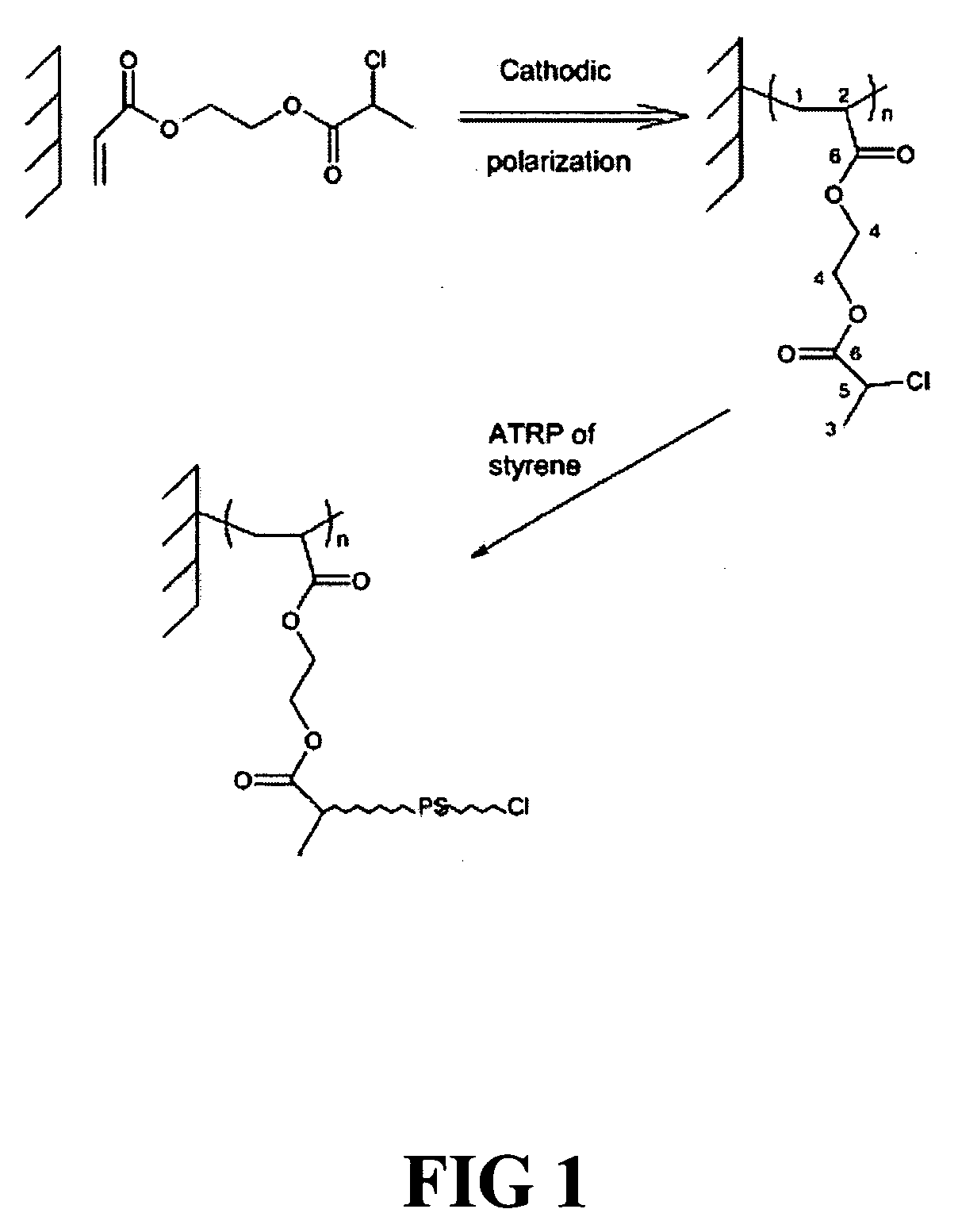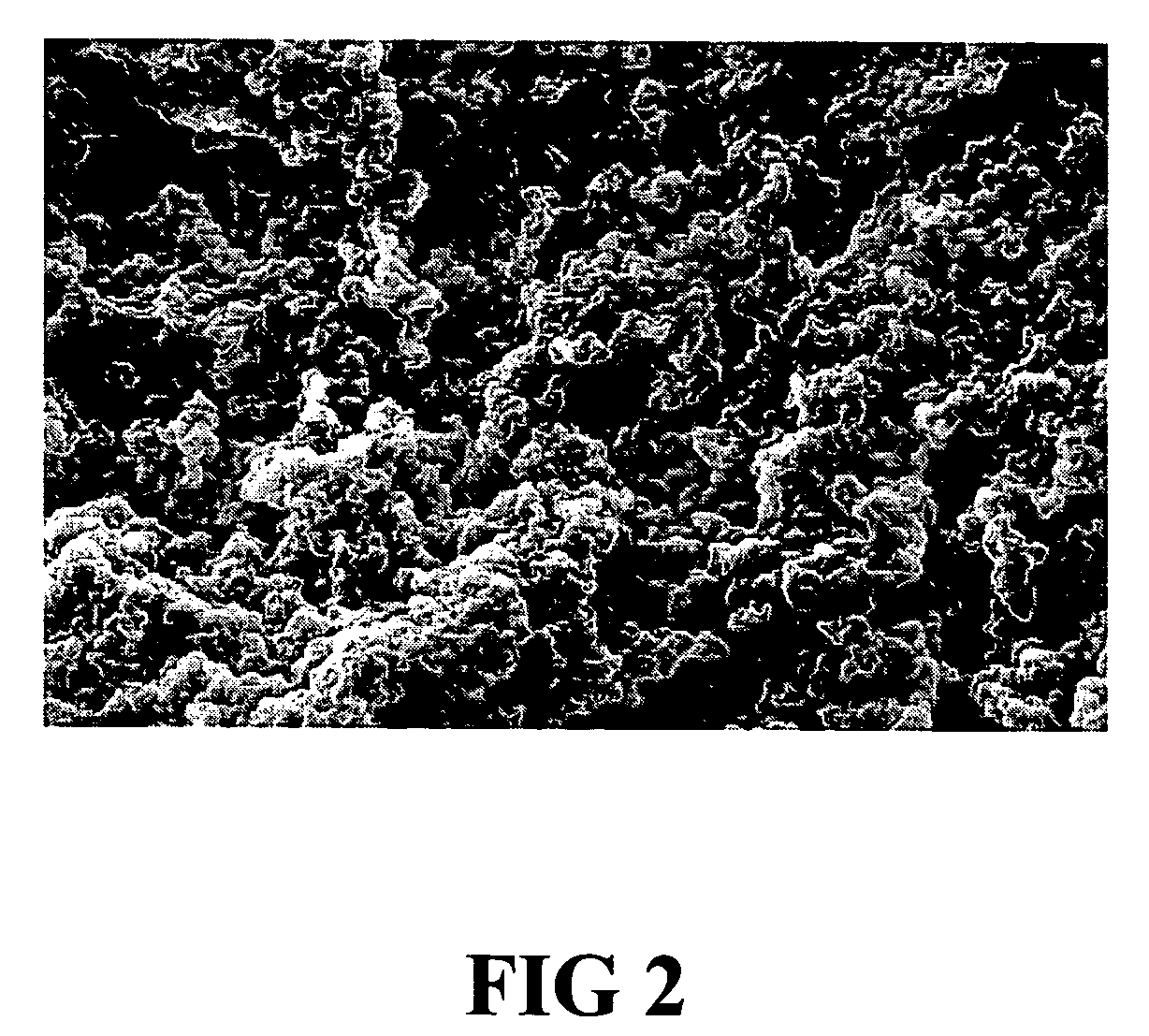Medical devices having conductive substrate and covalently bonded coating layer
- Summary
- Abstract
- Description
- Claims
- Application Information
AI Technical Summary
Benefits of technology
Problems solved by technology
Method used
Image
Examples
example
Polystyrene-Coated Stainless Steel Stent
[0076] A stainless steel stent having a polystyrene coating is produced by the electrografting of chlorinated poly(ethyl acrylate) onto a stainless steel stent surface, followed by ATRP with styrene monomer. A 2-chloropropionate ethyl acrylate (cPEA) initiator is synthesized by reaction of 2-hydroxyethyl acrylate with 2-chloroproopionyl chloride in the presence of triethylamine to form (cPEA). The cPEA is dried over molecular sieves before electropolymerization, and the ethyl acrylate monomer is dried over calcium hydride and distilled under reduced pressure. N,N-Dimethylformamide (DMF) is dried over P2O5 and distilled under reduced pressure. Tetraethylammonium perchlorate (TEAP) is heated in vacuo at 80° C. for 12 hours, prior to use. Styrene (Aldrich) is dried over CaH2 and distilled before use. Phenylethyl bromide (PEBr) (Aldrich) and HMTETA (Aldrich) are diluted in dried toluene. The Grubbs catalyst (Aldrich) and NiBr2(PPh3)2 (Aldrich) ar...
PUM
| Property | Measurement | Unit |
|---|---|---|
| Electrical conductivity | aaaaa | aaaaa |
| Electric potential / voltage | aaaaa | aaaaa |
| Therapeutic | aaaaa | aaaaa |
Abstract
Description
Claims
Application Information
 Login to View More
Login to View More - R&D
- Intellectual Property
- Life Sciences
- Materials
- Tech Scout
- Unparalleled Data Quality
- Higher Quality Content
- 60% Fewer Hallucinations
Browse by: Latest US Patents, China's latest patents, Technical Efficacy Thesaurus, Application Domain, Technology Topic, Popular Technical Reports.
© 2025 PatSnap. All rights reserved.Legal|Privacy policy|Modern Slavery Act Transparency Statement|Sitemap|About US| Contact US: help@patsnap.com



